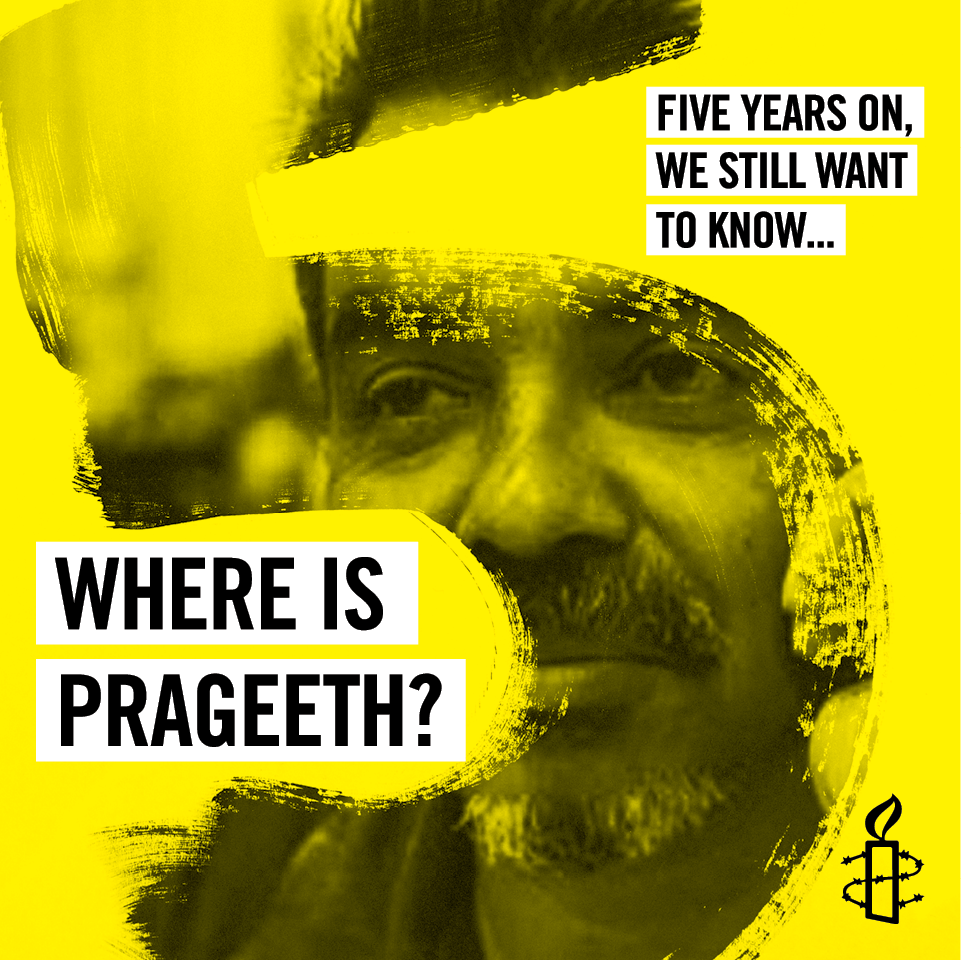by Ishany C. Balder and Aimah Moiz
SINCE the 1980s, there have been an estimated 80,000 cases of en-forced disappearances in Sri Lanka. This is 0.4% of the current population, making Sri Lanka the country with the second highest number of disappeared people in the world after Iraq. Disap-pearances became the modus operandi during the 1983-2009 Civil War, and still continue to this day. These are not simply acts of violence focusing on individuals; rather they are a discrete form of violence that aims to define the relationship between the state and the community concerned by fear and submission.
The cases of disappeared persons in Sri Lanka involve two ethnic parties – the Sinhalese Sri Lankans, considered to be the original inhabitants of the island, most of them being Buddhists and some Christian, and Tamil Sri Lankans, mostly Hindus of Indian descent with a majority living in the northern part of Sri Lanka – where both parties entailed victims and perpetrators. The rationale for their acts is embedded deep in the early history of Sri Lanka. However, menacing hostility between the two parties only arose post-independence from British colonial rule in 1948; after which relations between the Sinhalese majority and Tamil minority communities entered into a cycle of ethnic con-flict.
Following independence, discrim-inatory acts such as the “Ceylon Citi-zenship Act’ made it virtually impos-sible for Tamils to gain citizenship in the country. The ‘Sinhala Only Act’ replaced English with Sinhala as the official language which discouraged Tamil Sinhalese from working in pub-lic services, and the ‘Policy of Standard-ization’ made it harder for Tamil stu-dents to enter universities. These and several other acts caused the formation of radical Tamil groups and separatist activities, which escalated to a civil war between the Sinhalese and LTTE (The Liberation Tigers of Tamil Ealam, also known as the Tamil Tigers) in 1983.
The LTTE’s aim to create a separate homeland for the Tamils in the North-ern and Eastern provinces of Sri Lanka through guerrilla campaign against the Sri Lankan Government encompassed endless massacres, suicide attacks and assassinations. The Civil War was a period with an immense number of disappearances of innocent victims. Throughout the country, people were disappearing. Government death-squads were hunting down, kidnap-ping and killing Sinhalese and Tamil youth for sympathising with either side respectively. While the Civil War may have ended, the disappearances still continue characterised by forced ab-ductions into unmarked white vans.
On the 11th of February 2012, Ra-masamy Prabakaran, a Tamil business-man, was forced into a white van out-side his front door. Previously, he had been suspected of having links with the Tamil Tigers due to which he was detained by the police for 2.5 years in 2009 during which he was tortured and abused. His abduction occurred two days before he was due to testify about being mistreated by the police during his detention earlier A few months earlier, on the 9th of December 2011, Lalith Kumar Weeraraj and Kugan Muruga-nandan, both human rights defenders and political activists, disappeared in the Northern Province of Jaffna, just be-fore a press conference they organized for human rights day.
Perhaps the most notable disappear-ance was that of Pragetth Eknaligoda, a cartoonist, political analyst and jour-nalist. On the evening of 24th January 2010, two days prior to the presidential polls in Sri Lanka Prageeth left his of-ficeand has not been seen since. During this time he was actively supporting an opposition candidate. These are just a few examples of the recent enforced disappearances however one can ob-serve a pattern here. Those who dare to raise their voice by becoming politically active or for the sake of human rights live at threat of being abducted.
Today, disappearances and white vans may have subsided as compared to the days of the Civil War, but the vic-tims still suffer. The ‘victims’ here are the families of the disappeared that are left behind to cope with their grief and pursue justice for their disappeared family members and themselves. Not only do the disappearances violate ba-sic rights such as the right to know, the right to justice, the right to reparation and the guarantees of non-recurrence, but they can be classified as mental tor-ture towards the families; who suffer from indefinite stress and agony of not knowing the whereabouts and welfare of their loved ones. For them disappear-ance is a fate worse than death. Sand-hya Eknaligoda, wife of the abducted Pragetth Eknaligoda has been search-ing for her husband for 5 years. Her appeals to authorities have been largely neglected and she is now an activist for all disappeared. She still lives with the hope that her husband is still living and urges the public to “keep Prageeth’s is-sue alive” . Through a global memorial project, Amnesty International is doing just that.
October 27th is recognized as the national Day of the Disappeared in Sri Lanka. This year families of the disap-peared held a special memorial service of which the Amnesty International Student Group Middelburg contributed. Students of UCR who took part in Amnesty’s photo booth at the Elliott Mensa and in their canvas bag-painting workshop have all contributed to this global memorial project. The photos of our solidarity actions were assembled as a montage and displayed in Sri Lan-ka during the memorial service on the 27th. Through these global actions we have to recognize and uphold the rights of the families of those who have disap-peared and exert pressure for more in-vestigation into the cases of those disappeared, to save both them and their loved ones from the tortures that they have had to endure.
Ishany C. Balder, Class of 2017, is Vice-Chair of the Amnesty International Student Group Middelburg, from Negombo, Sri Lanka.
Aimah Moiz, Class of 2017, is a Math and Physics major from Karachi, Pakistan.

